In April 2024, I was finally able to embark on the trip to Asia I had been planning for four years. I first made contact with the Matsumoto Alphorn Club at the beginning of 2020 because I was interested in the alphorn scene of Japan. But then the coronavirus pandemic intervened.
Now the time had come. Matsumoto is located at the foot of the Japanese Alps in the province of Nagano. The landscape resembles some areas in the European Alpine region.
I was welcomed at the station by two members of the Alphorn Club. Plans were made over a meal in a typical Japanese restaurant. Before the scheduled workshop at the weekend, I had two days to get to know the region. My hosts took turns showing me around, including Matsumoto Castle, a ceremony in a Buddhist temple, a Shinto shrine in the mountains high above Nagano and the mountain village of Togakushi with a fantastic view of the snow-covered mountain range.
The alphorns were usually there, and in suitable places they were played, sometimes as a duo, sometimes as a trio or quartet. Each day ended in a specialty restaurant. I got to know and appreciate various Japanese dishes in a cheerful atmosphere: Sukiyaki, yakitori, okonomiyaki and more, accompanied by plenty of beer and sake.
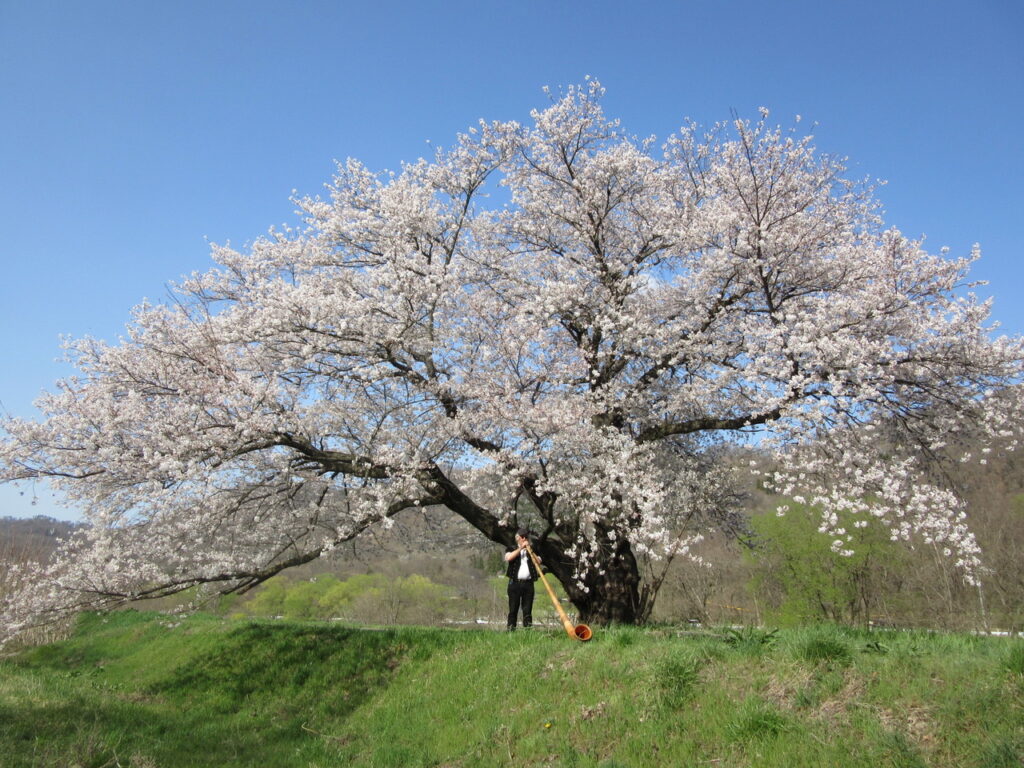
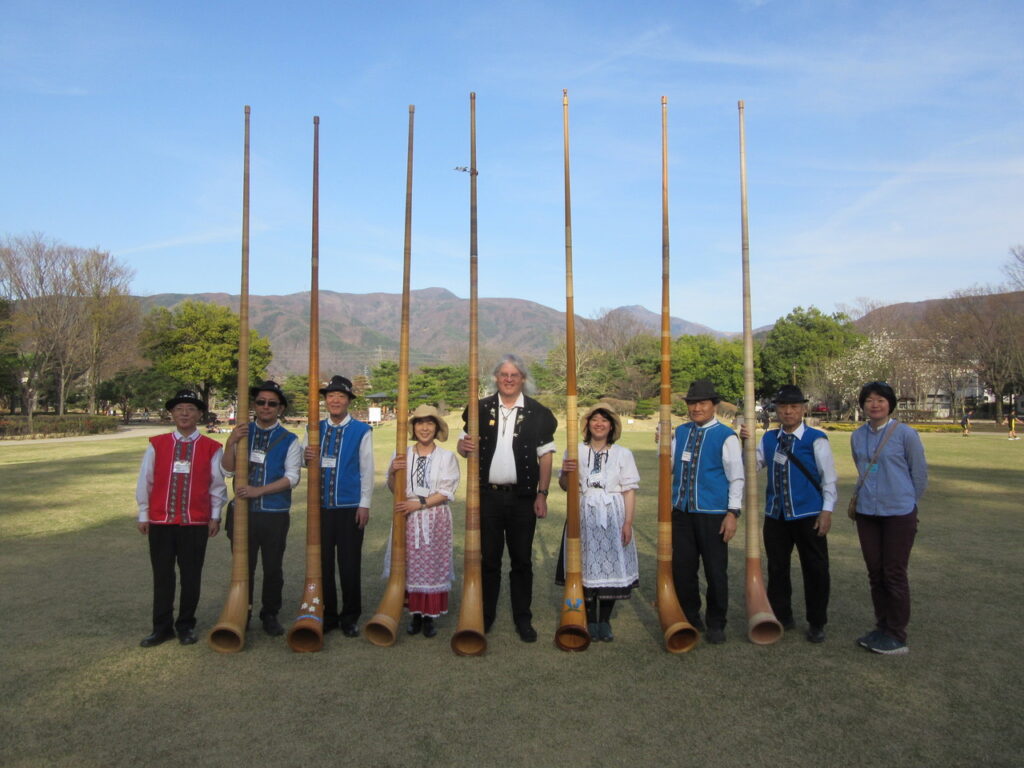
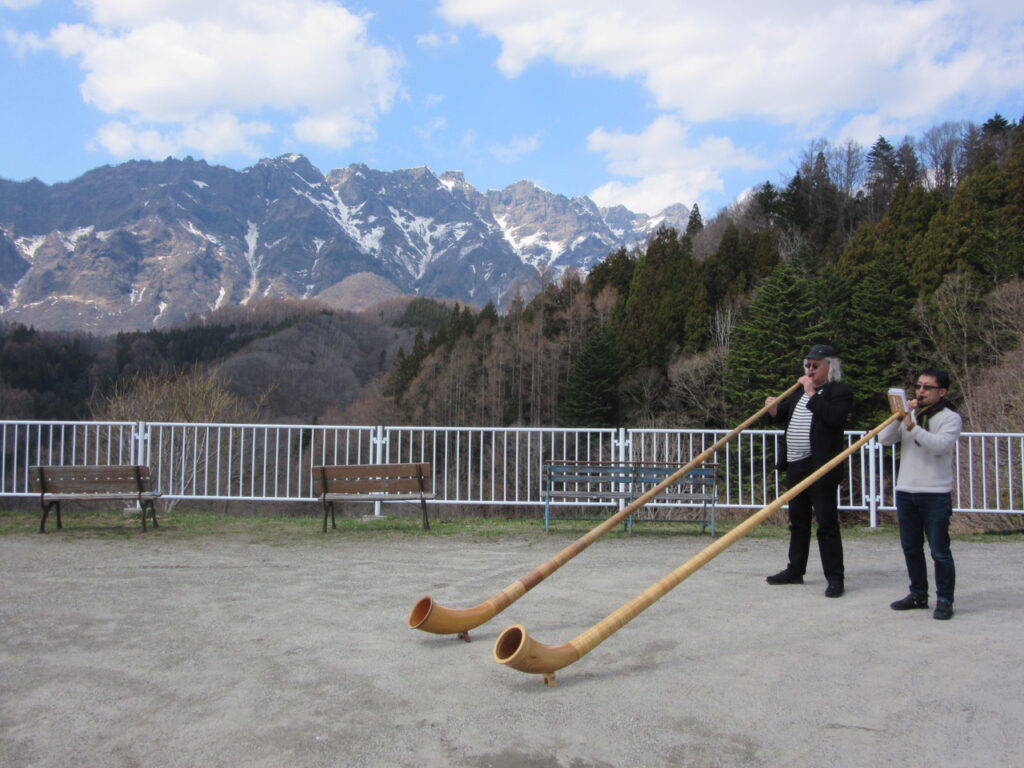
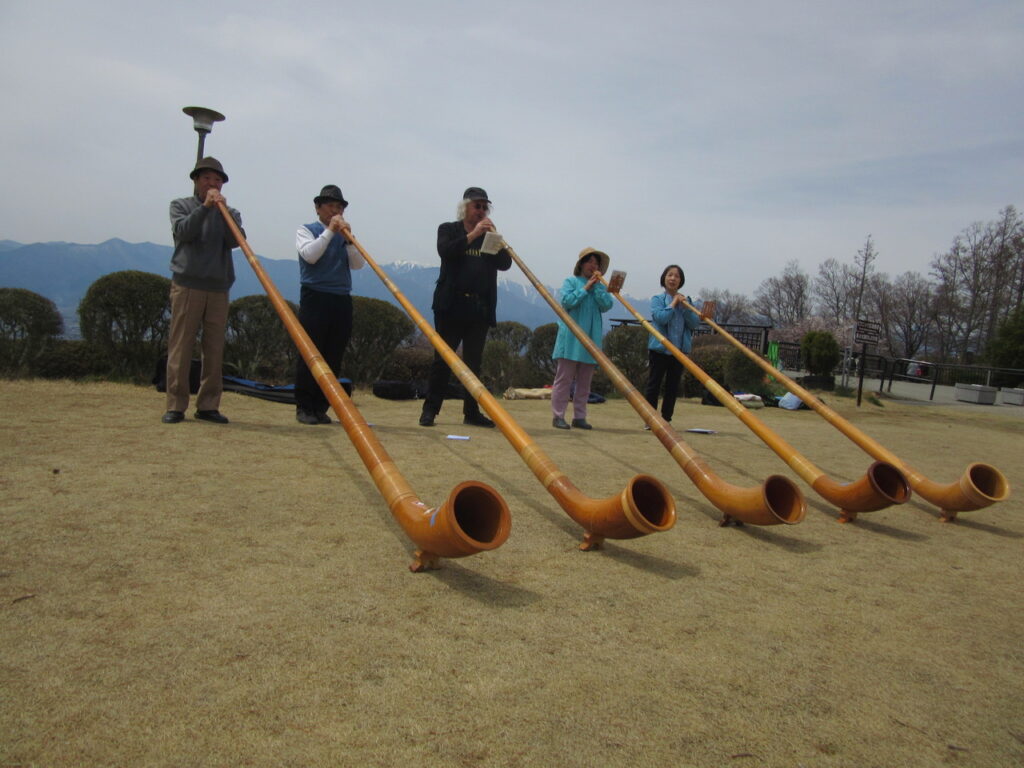
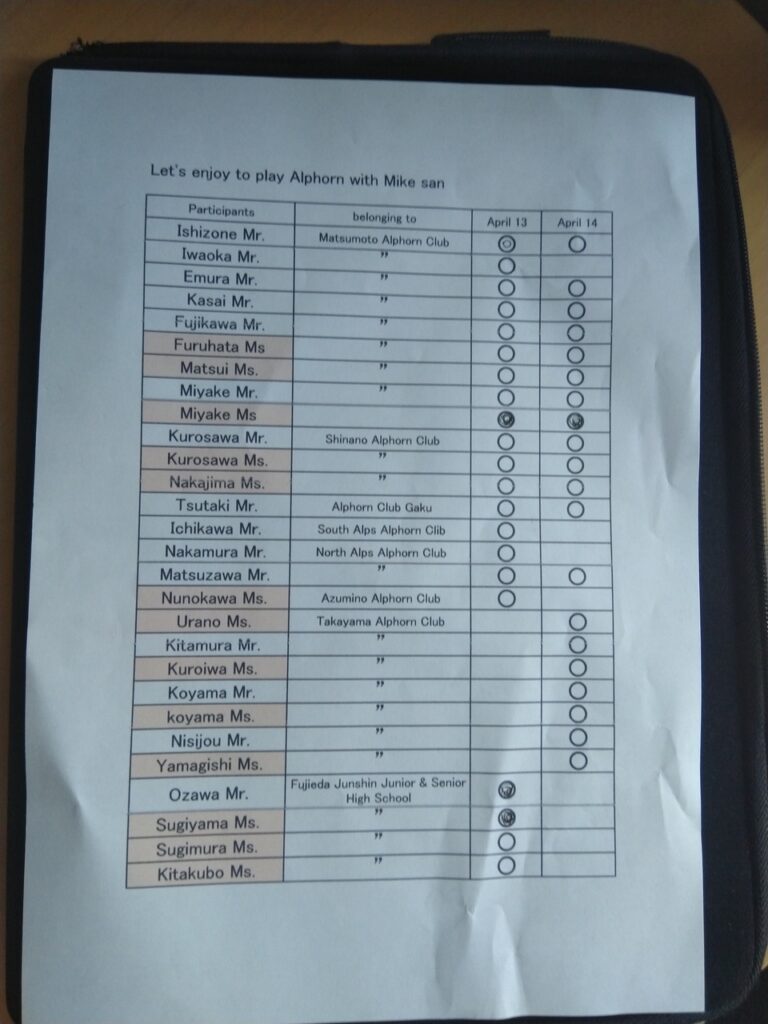
The two-day workshop followed at the weekend. I was greeted at the beginning with a performance of my piece “Bellavista” by the entire choir. The Matsumoto Alphorn Club had invited delegations from other alphorn clubs in the area, each of which presented a piece of music. Thanks to the beautiful weather, we were able to hold most of the workshop outdoors. The organizers wanted me to use my compositions (which the participants had practiced in advance) to give advice on interpretation. There was even a translator on hand to translate my comments into Japanese.
I alternated between playing along and conducting. The director of the Matsumoto Alphorn Club, Masao Ishizone, conducted with great commitment. He kept asking for my opinion on how individual phrases should be played or how he should lead the group.
I was impressed by the seriousness, diligence and level of playing ability of the workshop participants, including a pleasing number of women and some young people. My suggestions regarding alphorn interpretation (agogics, dynamics, dramaturgy) were respectfully observed and directly incorporated into the performance.
The repertoire of the Japanese alphorn scene is characterized by the popular pieces of traditional Swiss literature such as the “Berner” or the “Engelberger Echo”. When I asked, I was also presented with some pieces of Japanese origin, which were melodically quite well done. However, the polyphonic writing often seemed a little awkward to me.
The workshop ended on Sunday under blossoming cherry trees in a park. In the final concert, the students put what they had learned into practice. It was an honor to be able to experience my own compositions in this setting. I was also very pleased with the considerable progress in ensemble sound and interpretation that was achieved during these two days thanks to the attentive and willing participation of the participants. They obviously appreciated my comments and references to the Swiss alphorn tradition and were delighted with my visit. I am extremely grateful to my new Japanese alphorn friends in Matsumoto for their hospitality and secretly hope that there will be another opportunity to play the alphorn together in the near future.
Compositions for Matsumoto
| Opus | Annum | Voces |
|---|---|---|
| Matsumoto no omoide | 2024 | 3 |
| Matsumoto-jou | 2024 | 3 |
| Sakura no shita no arupuhorun | 2024 | 3 |
| Tomodachi ni kanpai! | 2024 | 3 |
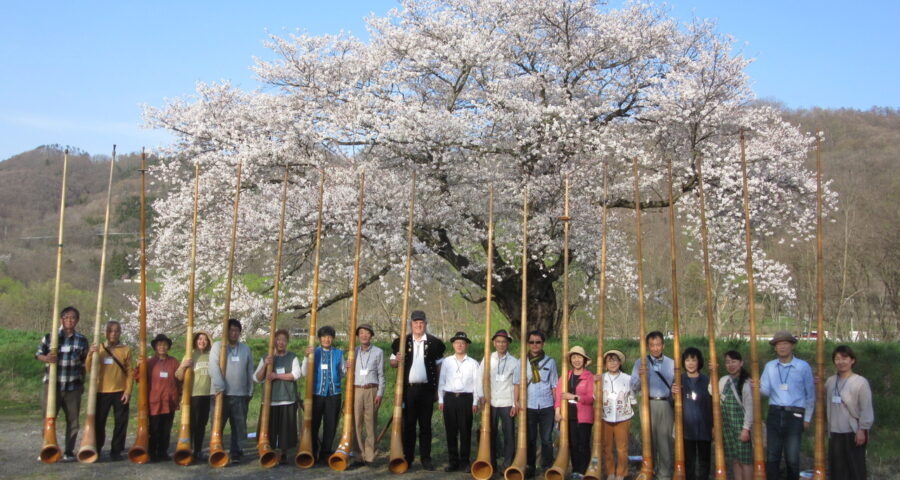
Leave a Reply